Ask a question from expert
Customer Decision Making Assignment
41 Pages11344 Words171 Views
Added on 2020-06-06
Customer Decision Making Assignment
Added on 2020-06-06
BookmarkShareRelated Documents
Assessing the relationship between the purchaseprice and type of organic food A case study of customer decision making atMorrisons QueensburyMAY 20181
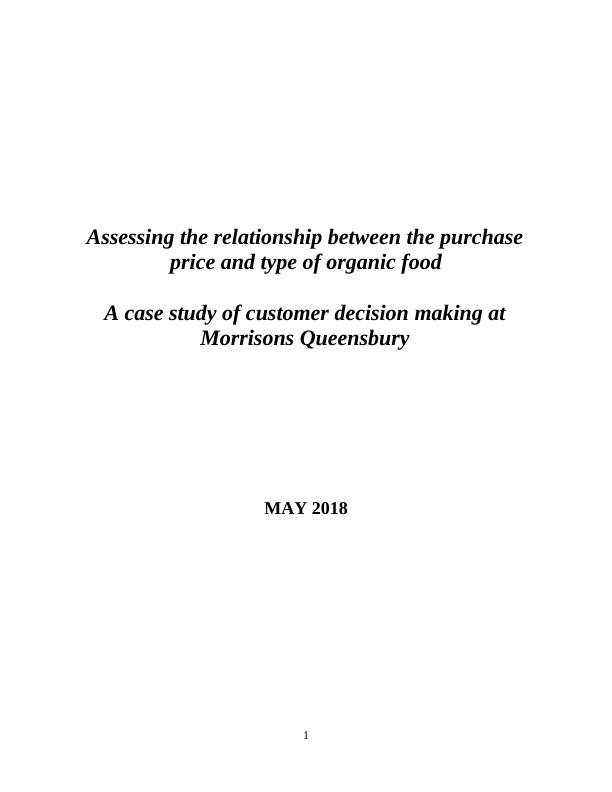
ACKNOWLEDGEMENTFor the accomplishment of the present dissertation I would like to sincerely express byearnest gratitude to my mentor who has provided me sufficient knowledge and greater support.Further I would also like to thank my friends, colleagues and family members who have guidedme at every stage while conducting this dissertation. Through their support, I was able tocomplete my thesis with effectiveness and in an accurate manner. Lastly in the series, I wouldalso like to state special thanks to my team members who have provided me huge assistance incollecting relevant set of data and further analysing it.AbstractAim: To assess the relationship between purchase price and type of organic foodMethods: primary and secondary sources will be used. In primary sources, information will becollected from 50 customers of Morrisons, Queensbury through a survey. On the other sidesecondary information will be gathered from, books, journals, articles.Results: the price of the organic fruit and premium price is always remaining a great interest inthe research. From last few years there is continues increase in demand of organic food. Alongwith this, price of organic fruit is also increasing with demand. Consumer are becoming moreaware about the impact of eating organic fruit as due to which demand increased in the market.There are various factors that influence buying decision of customers such as price, quality,needs etc. For an organisation it is essential to focus on all these factors to sale organic fruits. 2

Table of ContentsCHAPTER 1 - INTRODUCTION...................................................................................................51.1 Overview..........................................................................................................................51.2 Research problem (rationale)...........................................................................................51.3 Aims and objectives.........................................................................................................61.4 Research questions...........................................................................................................61.5 Potential Significance.......................................................................................................6CHAPTER 2 - LITERATURE REVIEW........................................................................................72.1 Introduction......................................................................................................................72.2 Consumer behaviour towards the consumption of fruits as an organic food...................72.3 Link between purchase price and fruits a type of organic food.......................................8Conclusion............................................................................................................................11CHAPTER 3: RESEARCH METHODOLOGY...........................................................................123.1 Introduction....................................................................................................................123.2 Research philosophy.......................................................................................................123.3 Research approach..........................................................................................................123.4 Research design..............................................................................................................133.5 Data collection................................................................................................................133.6 Data analysis:..................................................................................................................143.7 Sampling.........................................................................................................................153.8 Ethical consideration......................................................................................................153.9 Research limitation.........................................................................................................16Conclusion............................................................................................................................16CHAPTER 4: DISCUSSION AND FINDINGS...........................................................................174.1 Introduction....................................................................................................................17CHATPER 5: CONCLUSION......................................................................................................335.1 Conclusion......................................................................................................................335.2 Recommendation............................................................................................................34References......................................................................................................................................353

Figure 1: Nicoleta Mandras (2018)................................................................................................17Figure 2: Nicoleta Mandras (2018)................................................................................................18Figure 4: Nicoleta Mandras (2018)................................................................................................21Figure 5: Nicoleta Mandras (2018)................................................................................................22Figure 6: Nicoleta Mandras (2018)................................................................................................23Figure 7: Nicoleta Mandras (2018)................................................................................................24Figure 8: Nicoleta Mandras (2018)................................................................................................25Figure 9: Nicoleta Mandras (2018)................................................................................................264
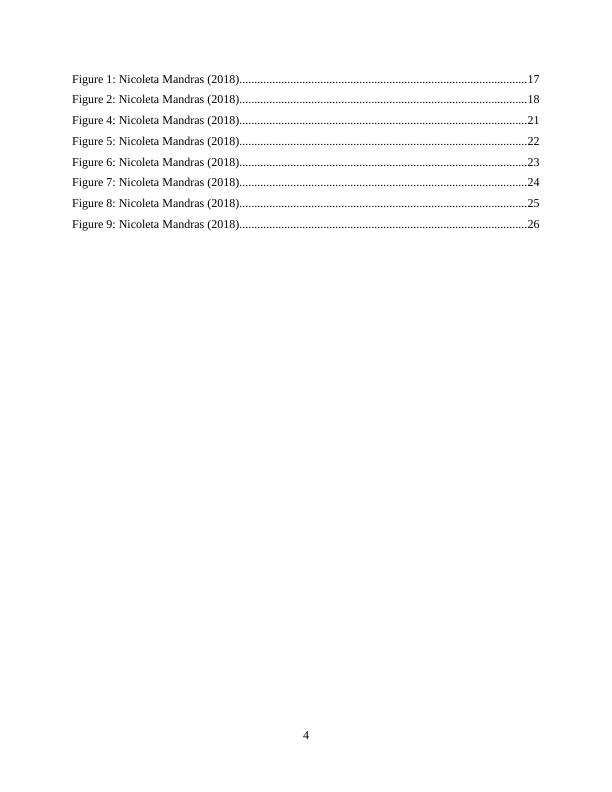
CHAPTER 1 - INTRODUCTION1.1 OverviewConsumption of organic food has grown remarkably in both developed and developingcountries. Global market for organic food has reached up to $45m which is estimated by nationalFood and Agriculture organisations. Presently, the term “organic food” remains defined along adimension such as naturally produced, biological environmental friendly, green with the limiteduse of chemicals (Lee and Yun, 2015). The increase in demand for organic food arises due to theperception of product quality and safety. Current research is based on assessing the relationshipbetween the purchase price and type of organic food such as fruit. There is a change in lifestyleof customers, as customers become more aware of their health’s which resulted from healthyfood consumption. Therefore, organic foods are now greater in demand as compare to inorganicfood. Customer purchase decision get influence due to increases in the price of organic fruits(Feldmann and Hamm 2015). The present research conducted for understanding factors thatinfluence buyer decision such as price while purchasing of organic fruits. A reason which isidentified due to which customers do not buy organic food was price as because companiescharge a premium price. 1.2 Research problem (rationale)In the 21st century, there has been a growing trend toward the adoption of organic food insupport of healthy lifestyle choices of people as they are become more health conscious andprefer a healthy lifestyle. Due to this reason, customers have started switching from non-organicfood to organic products (Teng and Wang, 2015). There are various factors which haveinfluenced their purchasing decision toward organic products such as age, gender, price etc.Among all these factors, the price is considered a major factor which influences their buyingdecision. Research findings have revealed that there is a direct relationship between the purchaseprice and type of organic food (Moser, 2015). Based on this background, this research studyintends to shed light into developing a better understanding of how the impact of the price oforganic fruit influences customer buying behaviour at Morrisons Queensbury. The presentresearch will help me in future while carrying out my further studies. The reason for choosingthis topic is that it will help in preparing for Ph.D. and developing a depth understanding on theimpact of price on purchasing decision of customers. 5
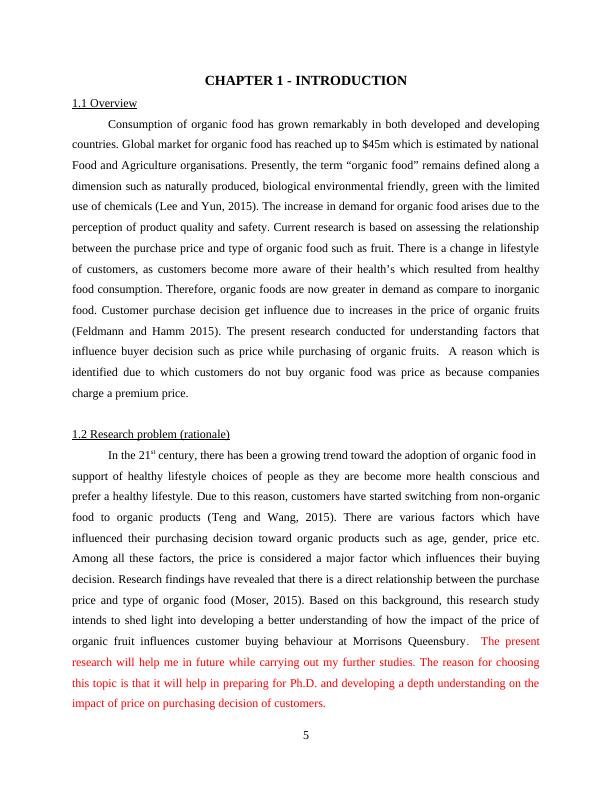
1.3 Aims and objectivesAim of the present research is “To assess the relationship between purchase price andtype of organic food - A case study of customer decision making at Morrisons, Queensbury.ObjectivesBased on aim there are some objectives have been prepared for the present study. To explore the relationship of the price of organic fruit and customer buying behaviour inthe U.K.To discover the prices of organic fruit at Morrisons QueensburyTo explain why customers buy organic fruit at Morrisons QueensburyTo evaluate the relationship between purchase price of organic fruit and customerpurchase behaviour of organic fruit at Morrisons Queensbury1.4 Research questionsTo complete the entire dissertation in a systematic manner, it is important to formulateresearch questions. It aids in building a strong framework for the research. Here below areprovided various questions which are formulate:Q1. What does the literature reveal regarding the relationship between the price of organic fruitand customer buying behaviour in the U.K.?Q2. What are the prices of organic fruit at Morrisons Queensbury?Q3. Why do customers buy organic food at Morrisons Queensbury?Q4. How does the purchase price of organic fruit influence customer purchases of organic fruit atMorrisons Queensbury? 1.5 Potential SignificanceIf company set products as per customer need at reasonable price, then it leads to help inenhancing profit and sales of the firm. Here below are the potential significance of research:Retail sector will provide assistance from the research. They can easily set the price oforganic product that can influence their buying decision.It will be helpful for the analyst to prepare an overview on the impact of purchase priceon customer decision while buying organic product.6

CHAPTER 2 - LITERATURE REVIEW2.1 IntroductionAfter introduction chapter, another one is literature review which is one of the criticalparts of the thesis. Complete information presented in this section is collected from secondarysources which act as a basis through which further study can be carried out. Therefore, in thischapter, views and opinion of different authors are presented in an effective manner. Along withthese opinions of the different researcher on the selected topic is critically evaluated. Thischapter helps in filling the gap left in previous researchers. Hence, this section helps in building astrong framework for the selected topic. Literature review chapter includes consumer behaviourtowards the consumption of fruits as an organic food. Later, it consists of link between the pricesand fruits a type of organic food. Further, this section also covers the way purchase priceinfluence buying decision of customers. Lastly, it includes the impact of purchase price oncustomer decision while buying an organic product of Morrisons. 2.2 Consumer behaviour towards the consumption of fruits as an organic foodAccording to the views of Moser, (2015), organic food is minimally processed tomaintain the integrity of the fruit without using any artificial ingredients, preservation andirradiation. Generally, organic food is produced in a friendly environment, contributiontechnique which consider both the attributes of the final product and production method. As perHsu and Chen, (2014) the consumer buying behaviour is combination of attitude, behaviour,intention, preference and decision related to customer behaviour in the market place whilepurchasing products and services. To analyse the consumer behaviour market research, need tobe conducted. However, it can be stated that it is social, psychological and physical action of anindividual when they prefer to buy any product or service. There is a various circumstance inwhich customer make a purchase and consume products and services. Consumer behaviour includes feeling, experience, ideas and actions of customers withsome extra environmental factors such as the price of product, advertisement, etc. It can also bestated as a dynamic process because changes take place in ideas, perception and activities ofcustomers. Feldmann and Hamm, (2015) states that stimulus respond model is basically used toexplain customer’s buying behaviour. 7
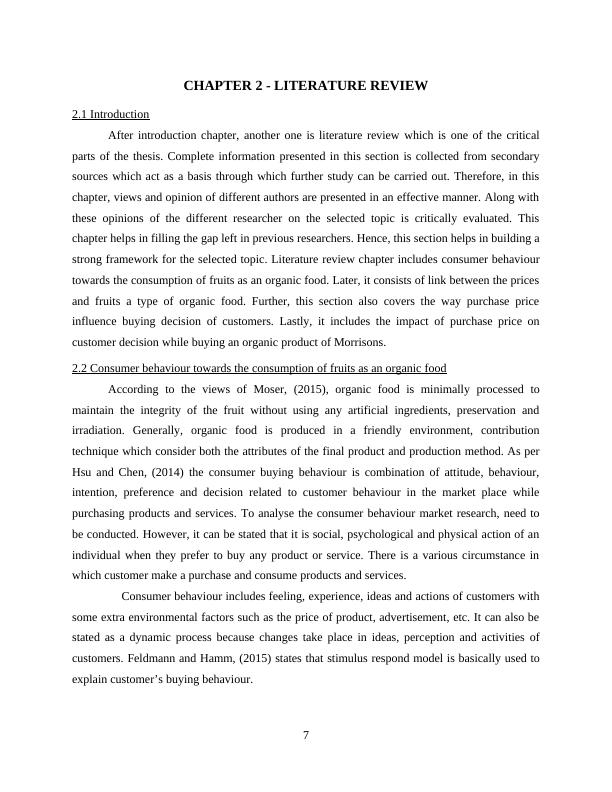
Lee and Yun, (2015) state that there are several methods that influence consumption offruits as an organic food such as demographic factor, social factors and income, etc. Among all,the price is one of the major factors making decision of purchasing organic fruits. In the market,price of organic fruit is mainly high due to which only high-class people can afford it. In maturemarket, a reduction in price can be noticed for attracting more people through environmentalprogram. However, for most of the customers, price factor does not affect their purchasingdecision if they know the benefits of consuming organic food. Therefore, due to health-consciouseating style, people are ready to pay high price for organic fruits. As per the BCG report, (2009) there are more than 50% of customers who choose not tobuy organic product because of various reasons such as they are not aware of importance ofgreen products or it is too costly for them. However, few of them felt that quality of product isnot so good as compared to inorganic products and due to less trust also, people avoid buying it.Basically, organic products are costly as compared to inorganic products. Therefore,Aschemann‐Witzel and Zielke, (2017) concluded that the essential consideration amongcustomers while buying organic food is health, environmental benefits and tastes. While theprice is considered as a major obstacle while making purchase decision. 2.3 Link between purchase price and fruits a type of organic foodSince from past decades’ organic food demand is considerable increasing and its consumption isonly a few percent in most of the countries. From the research it is identified that growth is highin UK as because of highest percent capita consumption (Feldmann and Hamm, 2016). Market ofUK is appropriate for customer’s analysis as because they are relatively mature, and they do notface any shortages and challenges which has dominated most of the market outside UK. According to Marian, Chrysochou and Thøgersen, (2014) organic food is known as thefood guaranteed which have been produced, stored and proceeds without adding a syntheticfertilisers and chemicals. Along with this, organic product is a food which is cultivated as anenvironmental friendly process. As per the national organic standard board of UK, agricultureorganic food should be produced without use of any chemicals and should be most syntheticfertilisers, and pesticides. Customers in all over the world are highly concerned about nutrition,health and quality of their food. Due to increase in the awareness of benefits of organic food itleads to increase the demand of organic fruits in most of the customers. Diallo, Coutelle‐Brilletand Zielke, (2015) state that consumers are becoming more educated and now, they prefer to buy8
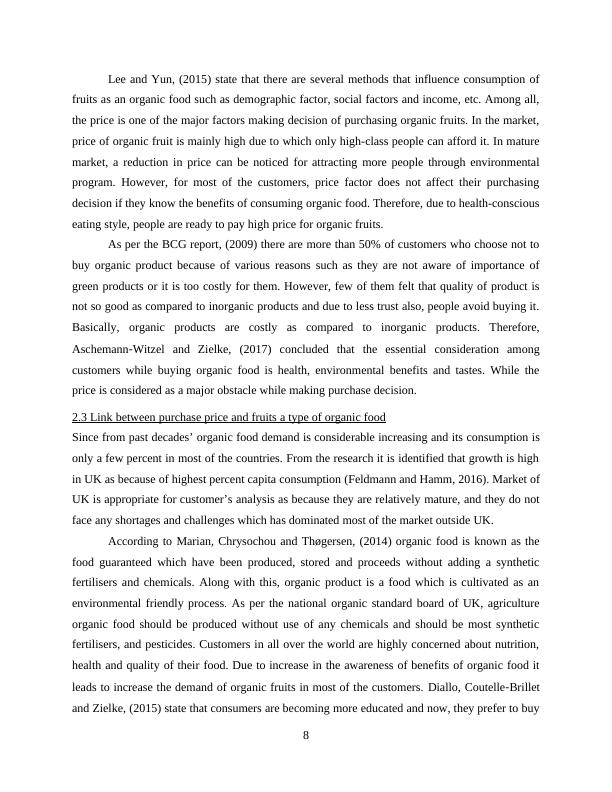
End of preview
Want to access all the pages? Upload your documents or become a member.
Related Documents
A STUDY INTO THE EFFECTS OF ORGANISATIONAL CULTURE ON EMPLOYEE MOTIVATIONlg...
|89
|19255
|82
Final MBA Thesis Assignmentlg...
|72
|18477
|43
Effectiveness of Government Legislation and Policies Assignmentlg...
|27
|12531
|37
Impact of Capital Structure on Profitability of HSBC Holdingslg...
|49
|13219
|138
The Ethical Concerns of a Construction Industry in an Ever Changing Worldlg...
|68
|15659
|312
Use of Artificial Intelligence in Project Managementlg...
|63
|15751
|86